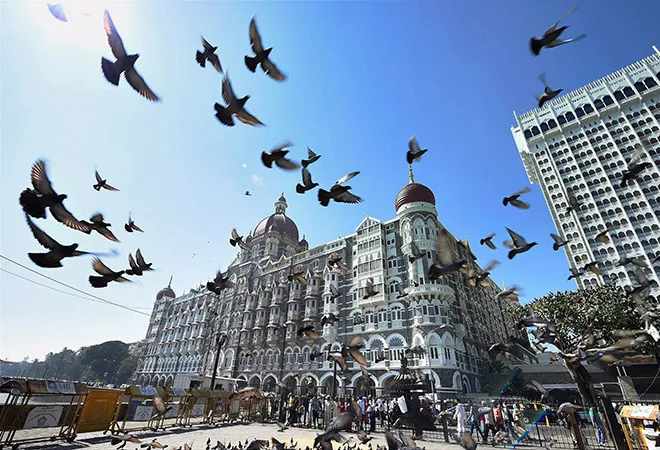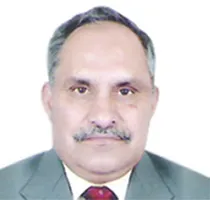
Bruce Riedel, eminent South Asia and Counter Terrorism expert, presently with the Brookings Institute, compares the Paris terror attack of 2015 to the horrific attack on Mumbai on 26 November, 2008. He suggests that “Mumbai has been studied by both terrorists and counter-terrorists because it set a gold standard for how a small group of suicidal fanatics can paralyse a major city, attract global attention, and terrorise a continent.” <1> He concludes his analysis by observing that the “Lashkar-e Taiba (LeT) paid no penalty for its attack, nor did its Pakistani patrons. The group’s senior leadership operates freely in Pakistan and enjoys the support and protection of the Pakistani Army.” <2> One may recall the three days of mayhem, before the ten LeT terrorists were neutralised (9 of them, killed by Indian security forces) but not before 165 innocent souls, including 25 foreigners, were killed and more than 300 persons were injured. Ten years on, the two obvious questions we continue to ponder are first, why Mumbai? And more importantly, can it happen again, and if so, is Mumbai prepared?
While focusing on the reasons for Mumbai being targeted, it would be worthwhile to look at the broader context and understand the motivation that drives Pakistan based and supported Islamic radical groups to attack targets outside Jammu and Kashmir. While completely unacceptable, one can still understand the logic followed by the Pakistani establishment to justify not just its interference in Jammu and Kashmir, but also its use of proxy war to attack the Indian security establishment, given the nature and history of the dispute between India and Pakistan. But, attacks beyond the state have invariably increased tensions between the two countries, threatened conflict and hindered dialogue. Not only has all of this impacted economic development of the region, more so within Pakistan, but its seemingly feeble attempts to distance itself from terrorist groups behind these attacks has also exposed it as a state sponsor of terrorism to the wider international community.
While completely unacceptable, one can still understand the logic followed by the Pakistani establishment to justify not just its interference in Jammu and Kashmir, but also its use of proxy war to attack the Indian security establishment, given the nature and history of the dispute between India and Pakistan. But, attacks beyond the state have invariably increased tensions between the two countries, threatened conflict and hindered dialogue.
The motivation for Jihadi elements in this respect has been clearly enunciated by Hafiz Sayeed, the founder of the LeT. He has often proclaimed that “There cannot be any peace while India remains intact. Cut them, cut them so much that they kneel before you and ask for mercy, and India has shown us this path. We would like to give India a tit-for-tat response and reciprocate in the same way by killing the Hindus, just like it is killing the Muslims in Kashmir.” <3>
The Pakistani establishments’ motivations are more complex and can be viewed through the prism of the Pakistan Army’s domination over its political and civilian space. The military’s centrality in Pakistan’s body politic is wholly dependent on India continuing to be seen as an existential threat — a perception that is universally accepted and is unlikely to see any changes for the better as long as the Kashmir dispute remains unresolved. <4> That apart, they continue to hunger for retribution and revenge against what they see as Indian interference that led to the formation of Bangladesh and forced a humiliating defeat upon their military in 1971. Finally, they believe they will be able to achieve victory in Jammu and Kashmir if they are able to destroy India’s secular foundation and turn the majority population against its Muslim minority. They hope to take advantage of the polarisation that has already happened due to the Babri Masjid demolition and its subsequent fallout leading to events such as the riots in Mumbai in 1992-93 and the Gujarat pogrom of 2002.
To be clear, Mumbai has now been under siege for over three decades. 26/11 was not the last time the city was targeted, though certainly not on the same scale. It was targeted again by multiple bomb blasts just three years later, on 13 July 2011, in which 26 people died and another 121 were injured. Lax security and intelligence lapses have continued to dog Mumbai, despite repeated attacks. <5> According to the South Asia Terrorism portal, Mumbai faced 14 terror strikes between 1993 and 2011 in which 719 people died, and 2,393 were injured. What truly sets the 26/11 attacks apart from previous ones was not the fact that the attackers came by sea, they have done that before when the consignment used in the 1993 terror attack was landed on the Shekhadi and Srivardhan coasts. Nor that Pakistan’s Inter-Services Intelligence was underwriting the operation; it had been doing so for decades in Punjab, Jammu and Kashmir and elsewhere. It was not the number of casualties -both the 1993 and 2006 multiple bomb attacks resulted in substantially more. Its importance lay in the sheer audacity, scale, scope, diversity and complexity of the attack. That it took three days to subdue and neutralise the terrorists clearly showed the ineptness and lack of cohesion of India’s counter terror policies, infrastructure and capabilities as nothing else could have, something that the Maharashtra Governments’ High-Level Enquiry Committee (HLEC) on 26/11 led by Mr. Ram Pradhan clearly brings out. <6>
To be clear, Mumbai has now been under siege for over three decades. 26/11 was not the last time the city was targeted, though certainly not on the same scale.
The failed attack on Parliament in 2001 resulted in the launch of Operation Parakram that nearly led to another war between the two nuclear armed neighbours. While Operation Parakram conducted over ten months, may not have produced the results that the government have hoped for, it made clear to Pakistan that the respond to such “Fedayeen attacks” would be robust. Simultaneously, action was initiated to substantially strengthen the security and intelligence infrastructure in the National Capital Region which made launching of the Mumbai type “commando assault” an extremely difficult proposition in Delhi. In effect this left Mumbai, the financial and cultural capital of the country, as the most viable choice as target for any high profile acts of terror being planned, if, as all terror attacks aim to- the intention was to capture international attention and paralyse the state.
Also, Mumbai’s humongous population, densely packed localities and creaking infrastructure, as well as its proximity to the sea and its large and vulnerable coastline made it even easier to wreak maximum havoc. Finally, there was the Dawood Ibrahim controlled criminal network that had spread its tentacles wide, controlled all criminal activity in the area and was known to be influential among the political, bureaucratic and police establishments. Dawood was himself under the protection of the ISI and had already been directly implicated in the terror attacks of 1993. His criminal network was ideally placed to provide logistic support for terror groups planning to target Mumbai, which is why the Pradhan Committee raised the question of local networks of support for the terrorists. <7> In such circumstances the selection of Mumbai by the LeT was logical and to be expected.
While Mumbai has continued to grow and thrive in the intervening years since the attack with minimal changes in its socio-economic and political environment, it is no longer as vulnerable and soft a target as it was in 2008. This is because of the quantum enhancement of the coastal surveillance infrastructure and better integration and demarcation of responsibilities of the Navy, Coast Guard and Marine Police have been undertaken, thereby minimising the ability to avoid detection in the seas off the city. Secondly, the establishment of the integrated NSG hub in Mumbai and the enhancement of the capabilities and training of Force ‘Alpha’ of the Mumbai Police, its Special Weapons and Tactics (SWAT) team, will certainly impact response timings and prevent terrorists getting the time, space or flexibility to conduct open ended operations we witnessed earlier. There have also been attempts to upgrade the technical capabilities, communication and training of the Police as well as put in place access control measures in vulnerable areas such as railway stations and hotels, though as per reports serious weaknesses continue to remain.
While Mumbai has continued to grow and thrive in the intervening years since the attack with minimal changes in its socio-economic and political environment, it is no longer as vulnerable and soft a target as it was in 2008.
Unfortunately, the two among the three major Central Government initiatives that would have greatly enhanced our counter terrorism capabilities have not been followed through. These pertain to the establishment of the National Counter Terrorism Center (NCTC) and its intelligence data exchange architecture (NATGRID). These have not fructified due to political differences among various political parties that see it as a threat to our federal structure. However, there is little doubt that this initiative if pushed through as visualised would have been of immense utility in ensuring our counter terror establishment was able to prevent and respond to terror threats in a timely and effective manner. Their necessity has become critical in view of the manner in which Pan-Islamic terror has evolved over the past decade with the advent of ISIS and its effective use of social media to draw recruits and plan and conduct attacks worldwide. <8>
Finally, we must accept the reality that however much the effort and resources we push into improving and enhancing our intelligence and counter terror architecture, the ability of terror groups to hit us in the hinterland will depend largely on whether Pakistan perceives us as a hard or soft state. If the Pakistani establishment is convinced of serious repercussions in the event of perpetrating such an attack via its proxies, they might deprive terror groups of the resources and training that they require to be able to launch such complex strikes. Unfortunately, as Bruce Riedel argues, there is no reason for the Pakistan establishment to see India as anything but a soft state. India’s political leadership has time and again shown that it lacks the resolve to follow through and is extremely reluctant to respond in an appropriate, adequate and timely manner against grave provocations and attempts to undermine its core interests. While the surgical strikes after the Uri incident in 2017 reflected a perceptible shift in political attitudes, it has not been sufficient to break the Pakistan Army- terror group nexus. What however has prevented another Mumbai type attack for the past decade is undoubtedly the growing realisation in Pakistan that public pressure in India will force any government in no matter its ideological leanings, to respond with force against a terror strike, irrespective of the consequences.
<1> Bruce Riedel, “Modeled on Mumbai? Why the 2008 India attack is the best way to understand Paris”, Markaz, 14 November 2015. (accessed on 6 September 2018)
<2> Ibid.
<3> Arundhati Roy, The Monster in the Mirror, The Guardian, 13 December 2008. (accessed on 2 October 2018)
<4> Wilson John and Vishwas Kumar, "Investigating the Mumbai Conspiracy", Pentagon Press, New Delhi (2009) pp 7.
<5> Rajesh Basrur, Timothy Hoyt, Rifaat Hussain, Sujoyini Mandal, "The 2008 Mumbai Terrorist Attacks: Strategic Fallout", S Rajaratnam School of International Studies: Monograph No. 17 (November 2009) pp12.
<6> Pradhan Committee Finds Serious Lapses on Gafoor’s Part, The Hindu, December 21, 2009. (accessed on 2 Oct 2018)
<7> A mole in Mumbai helped 26/11 attackers, The Hindu, 27 November 2013 (accessed on 4 October 2018)
<8> Sarita Azad and Arvind Gupta, A Quantitative Assessment on 26/11 Mumbai Attack using Social Network Analysis, CSTPV Journal of Terrorism Research: Volume 2, Issue 2 (November 2011). (accessed on 10 September 2018)
The views expressed above belong to the author(s). ORF research and analyses now available on Telegram! Click here to access our curated content — blogs, longforms and interviews.




 PREV
PREV


